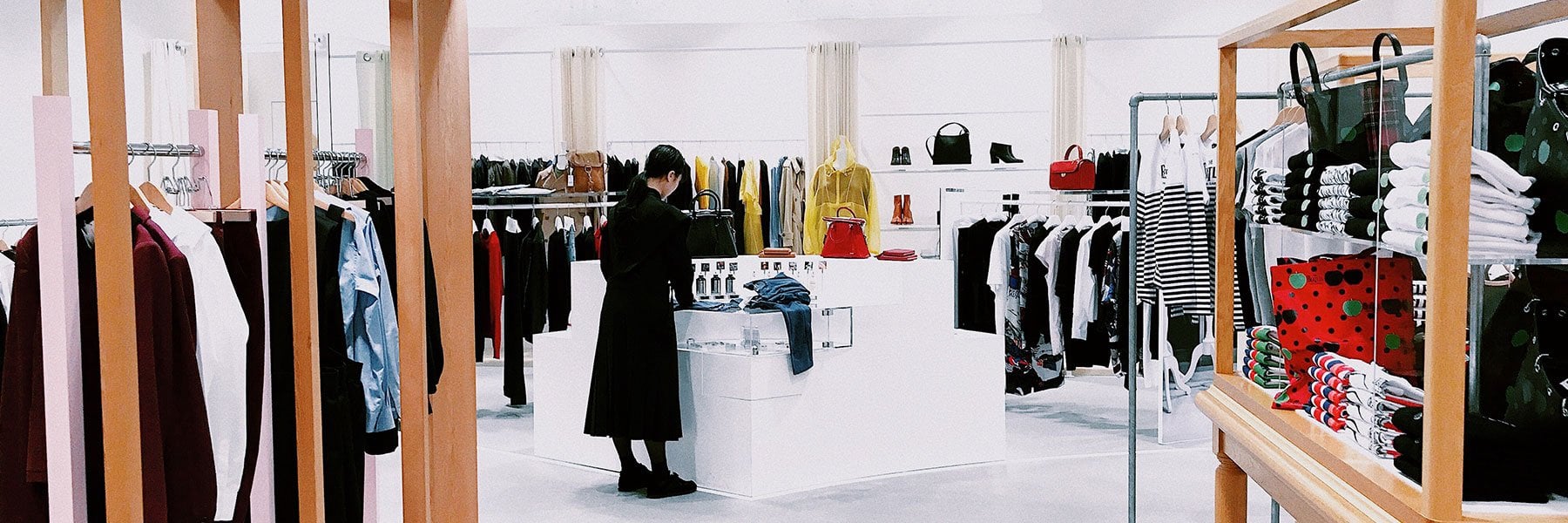
Want to do more in your store to maximise sales and attract your target customer? Understanding and utilising customer psychology is a huge part of making that happen.
The psychology of retail design looks at what factors affect the decisions customers make and how you can influence their actions. From the layout to your choice of colour scheme, here are some tips and tricks to implement in-store.
Colour Psychology
One of the biggest factors to consider when it comes to the psychology of retail design is colour. It might surprise you just how impactful colour can be. One study found that up to 90% of first impressions are based solely on colour, and colours are also known to have specific effects on human behaviour. In retail, this means they can make a massive difference in whether a customer makes a transaction and if they return to your store.

Here’s what we know about how certain colours influence emotions and behaviours in customers:
- Red: Grabs attention and encourages quick decision making and impulse purchases.
- Orange: Is associated with cheerfulness, motivation and prompts a call to action.
- Pink: Creates a sense of femininity, nurture and care in a store.
- Yellow: Promotes happiness, cheerfulness, and grabs window shoppers’ attention.
- Green: Creates a relaxing environment and promotes a feeling of peace and calm.
- Blue: Is soothing, calming and encourages a feeling of trust and loyalty in a brand.
- Purple: Can be soothing and also promotes creativity or a sense of luxury.
To have a successful retail store, use this colour psychology to your advantage. If you want to promote a sale, using red and orange colours to create a call of action and encourage impulse purchases would be your best choice. To create a soothing, relaxed environment for customers, you know to opt for green, purple or blue. Want an eye-catching window display? Choose yellow.
Use Colour to Target Demographics
As well as promoting actions in-store, colours also play a large role in successfully attracting your target customer. Data from another study showed that:
- Women prefer blue, purple and green, and most dislike orange, brown and grey.
- Men prefer blue, green and black and most dislike brown, orange and purple.
- Blue was the colour most favoured by both men and women, so is a good option if you have a broad target demographic.

We also know that 52% of shoppers wouldn’t return to a store if they didn’t like the aesthetics, so this is crucial to get right to build a returning customer base.
When you choose the colour scheme, the window displays and the promotional materials for your store, it’s vital to keep your target customer in mind and what actions you want them to take in-store. Choose your colours cleverly, and you will reap the benefits.
Layout
As well as colours, store layout plays a vital role in the psychology of retail design. Here are some top tips based on what we know about customer behaviours.
Steer Customers To The Right
Did you know that the vast majority of shoppers turn right when entering a store? This is known as the ‘invariable right’, a term coined Paco Underhill, and it could be down to the fact most people are right-handed.

With this knowledge in mind, place your core products or any promotions on the right-hand side of your store. You can also use this to create a store plan that guides customers anti-clockwise around your store. As you know the journey they will take, you can place products strategically in prominent positions to ensure customers notice them as they continue through your store.
Don’t keep important stock right at the front
Underhill also theorised that customers ignore everything in the first 10-15 feet of a store (known as the ‘decompression zone’). According to his research, customer interaction with products will increase at least 30% if moved further back – and even more so if placed on the right!
So, display your core products and promotions further into your store and concentrate on making the entrance clear of clutter and inviting to customers.
Give shoppers space
Customers don’t like to feel overcrowded in store. In fact, Underhill also theorised that women, in particular, are more likely to move to a different area of the store or leave completely if they’re bumped or brushed up against. To avoid this, make sure your aisles are spacious, and your most popular products are placed in an easy-to-access area.

Upsell products at the till
When your customers are headed to the till you still have the opportunity to boost your sales. Keep cheaper items near the front (along the queue line is a good idea if your store is big enough), as this will encourage your customers to add a last-minute impulse purchase to their basket.
Check your shelf height
The height you place your items on the shelf can also affect sales. One study shows that products at eye-level receive 35% more attention than those on lower shelves, so bear this in mind when placing your products. Keep low-price items lower down and your core products at eye-level.
As you can see, colour and layout are huge factors when it comes to retail success. So, use what we know about the psychology of retail design to your benefit. Follow these tips, and you’ll attract your target customer, influence their actions and ensure your store is a place they want to return to! To update your store displays, browse our display and merchandising range here at Displaysense.